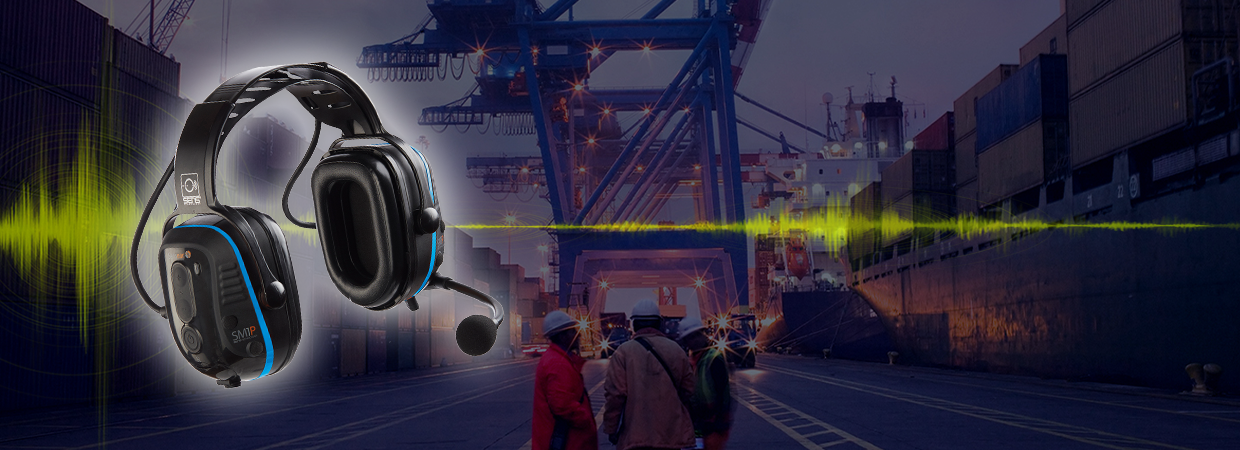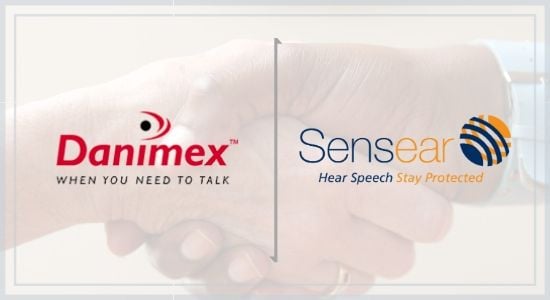- Home
- Blog
- Hearing Protection
- An Overview of Double Hearing Protection: Ensuring Safety in High-Noise Environments

An Overview of Double Hearing Protection: Ensuring Safety in High-Noise Environments
In industries with high levels of occupational noise exposure—such as mining, oil & gas, construction, manufacturing, and shipping—worker safety is a top priority. One of the most critical areas of safety is hearing protection, especially when noise levels are so high that traditional methods aren’t enough. This is where double hearing protection (DHP) comes into play.
What Is Double Hearing Protection (DHP)?
Double hearing protection (also called “dual protection”) involves using two forms of hearing protection simultaneously to provide a higher level of noise reduction. This typically combines earplugs with earmuffs. In environments where noise levels exceed 100 dB(A), using both earplugs and earmuffs can provide an additional layer of protection, with noise reduction typically ranging from 4-8 dB compared to standard hearing protection.
However, in extremely loud environments such as oil rigs or steel mills, where noise levels exceed 100 dB(A), even the best traditional hearing protection may not offer sufficient protection. Workers need hearing protection with communication that allows them to communicate clearly while ensuring their hearing is protected from the harmful effects of noise. This is where Sensear headsets with SENS® Technology become invaluable.
When Is Double Hearing Protection Required?
While OSHA does not specifically mandate double hearing protection (DHP) for all high-noise environments, many industry-specific guidelines do. For example, the Mine Safety and Health Administration (MSHA) requires dual protection for miners exposed to noise levels above 105 dB(A). Similarly, many other industries, including oil & gas, general manufacturing, and shipping, use internal guidelines or best practices to determine when double hearing protection is required.
- OSHA Recommendations: While OSHA doesn’t mandate DHP, they recommend dual protection in environments exceeding 100 dB(A).
- MSHA: Required for miners when noise exceeds 105 dB(A).
- General Industry Guidelines: Many organizations implement internal safety standards that call for DHP in environments with noise levels over 100 dB(A).
What Does NRR Mean for Hearing Protection?
NRR (Noise Reduction Rating) is a key factor in determining the effectiveness of hearing protection. It measures how much noise the hearing protection reduces in decibels. For example, if a hearing protection headset has an NRR of 30 dB and the noise level in the environment is 110 dB, the worker will experience a reduction of 30 dB, meaning they will effectively be exposed to 80 dB of noise.
In extreme noise environments, workers often need high NRR hearing protection. For example, Sensear’s extreme noise headsets feature an NRR of up to 36 dB, offering excellent protection while also enabling effective two-way radio communication. This combination ensures that workers remain safe without sacrificing communication clarity.
The Importance of Communication in High-Noise Environments
While double hearing protection is crucial in extremely noisy environments, it can be a double-edged sword. The added layers of earplugs and earmuffs often block out vital environmental sounds, including speech, alarms, and machine signals, which can compromise safety. The common practice for double hearing protection of adding foam earplugs may block noise with an NRR of 25-35 dB, but they also block critical sounds, increasing the chances of missed alarms and workplace accidents. Researchers at the Johns Hopkins School of Medicine and the National Institute of Aging discovered that for every 10 dB of hearing loss, the risk of slips, trips, and falls skyrockets by 140%.
This is where ear protection with communication technology comes into play. Headsets like Sensear’s SENS® Technology offer a unique solution. By enhancing speech clarity and suppressing harmful background noise, Sensear headsets allow workers to communicate clearly, even in environments where face-to-face communication is impossible.
Additionally, Bluetooth® earplugs and hearing protection Bluetooth® solutions enable wireless communication, providing freedom of movement while still ensuring that workers can communicate and maintain awareness of their surroundings.
Double Hearing Protection and Comms Headsets: The Best of Both Worlds
Sensear's comms headsets are designed to address the unique challenges of high-noise environments. These headsets incorporate dual protection by integrating earplugs into the headset design while also providing SENS® Technology to enhance speech communication and suppress noise. This combination makes Sensear's headsets a critical tool in maintaining both extreme noise protection and clear two-way communication.
For example, Sensear’s SM1P-ISDP extreme noise headset combines earplugs and earmuffs into one device, offering a noise reduction rating of 36 dB (NRR), ideal for high-risk hazardous environments like oil & gas sites, mining, steel mills, and construction.
Bluetooth® Solutions for Hearing Protection
Advances in Bluetooth® earplugs and hearing protection Bluetooth® technology now allow workers to stay connected wirelessly. This means no more worrying about tangled cords or poor communication. Workers in industries like manufacturing and shipping can now benefit from wireless communication headsets that offer protection without compromising clarity.
These headsets support two-way radio communications and enable clear speech even in environments where communication would otherwise be impossible. By integrating Bluetooth® technology, these headsets also enable hands-free operations, which enhances worker efficiency and safety.
The Benefits of Double Hearing Protection with Communication
By incorporating double hearing protection with speech-enhancing communication headsets, workers in high-noise environments can achieve the following benefits:
- Effective Communication in Extreme Noise: Comms headsets allow workers to communicate with one another, even in environments with noise levels exceeding 100 dB(A).
- Hearing Protection: Hearing protection with communication ensures that workers are protected from noise-induced hearing loss while staying connected.
- Wireless Flexibility: Bluetooth® earplugs provide wireless communication, offering flexibility and freedom of movement without sacrificing protection.
- Enhanced Situational Awareness: With advanced SENS® Technology, workers can remain aware of their surroundings while effectively communicating.
- Compliance: Stay compliant with safety regulations like those set by MSHA or OSHA, which recommend double hearing protection in extreme noise environments.
Conclusion
In environments with hazardous noise levels, such as mining, oil & gas, construction, manufacturing, and shipping, the importance of hearing protection cannot be overstated. With double hearing protection (earplugs and earmuffs) and advanced communication headsets, workers can stay safe without compromising their ability to communicate effectively. Sensear dual protection and intrinsically safe headsets, with their unique combination of SENS® Technology and Bluetooth® communication, offer a comprehensive solution for both extreme noise protection and clear, hands-free communication.
To learn more about double hearing protection, hearing protection Bluetooth®, or Sensear headsets, contact our team of experts today. We can help you find the best solution to keep your workers safe and connected in even the most challenging noise environments.








